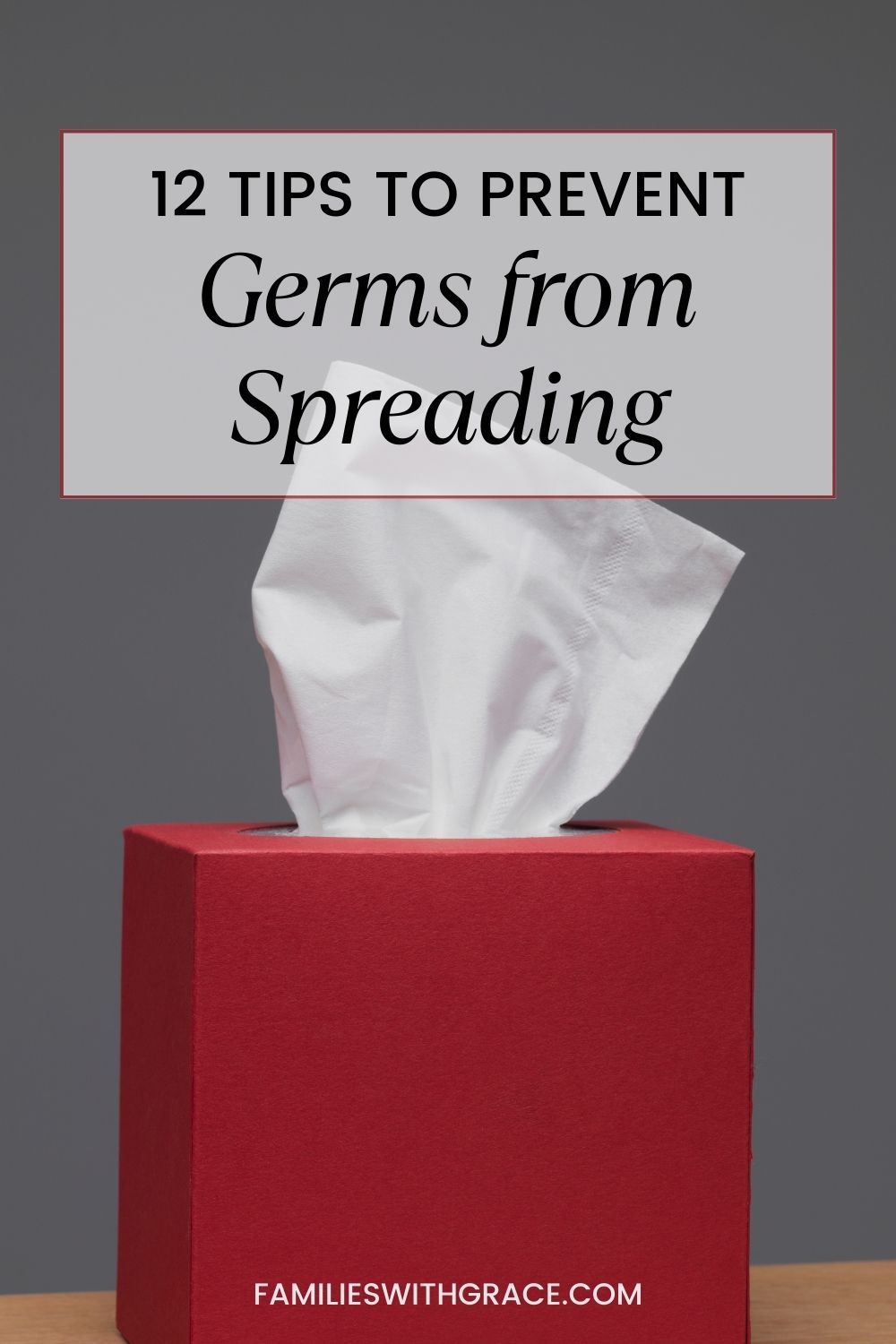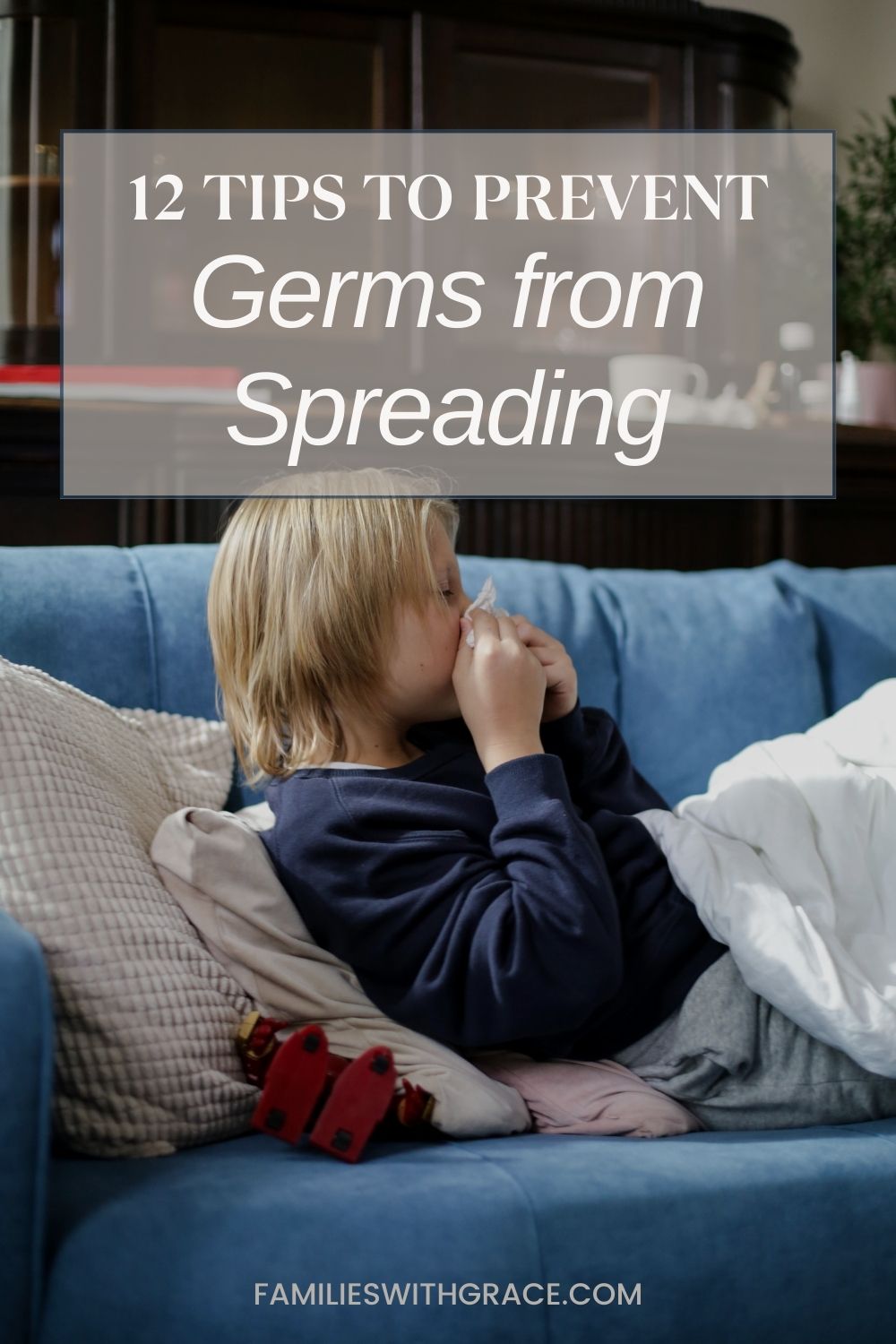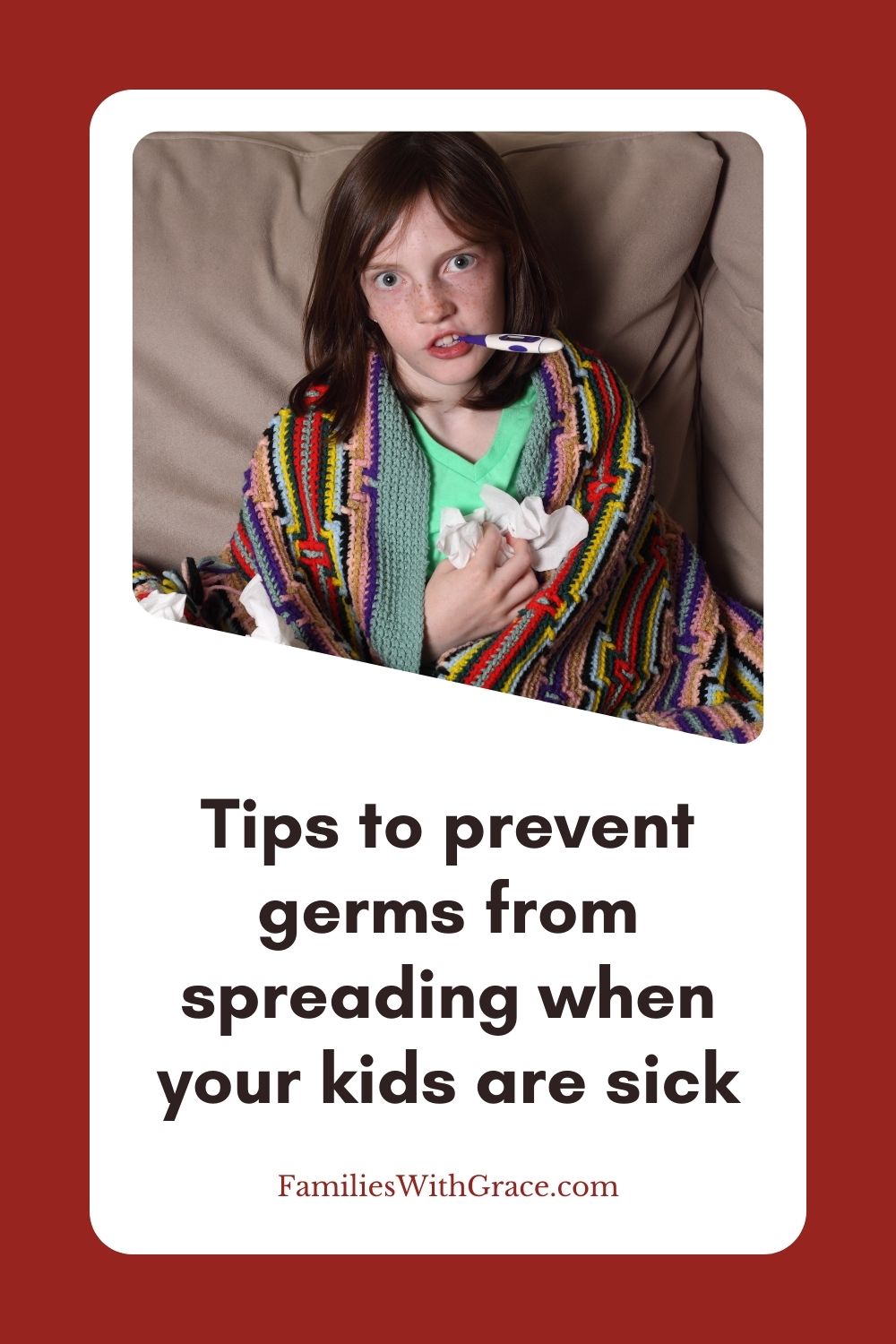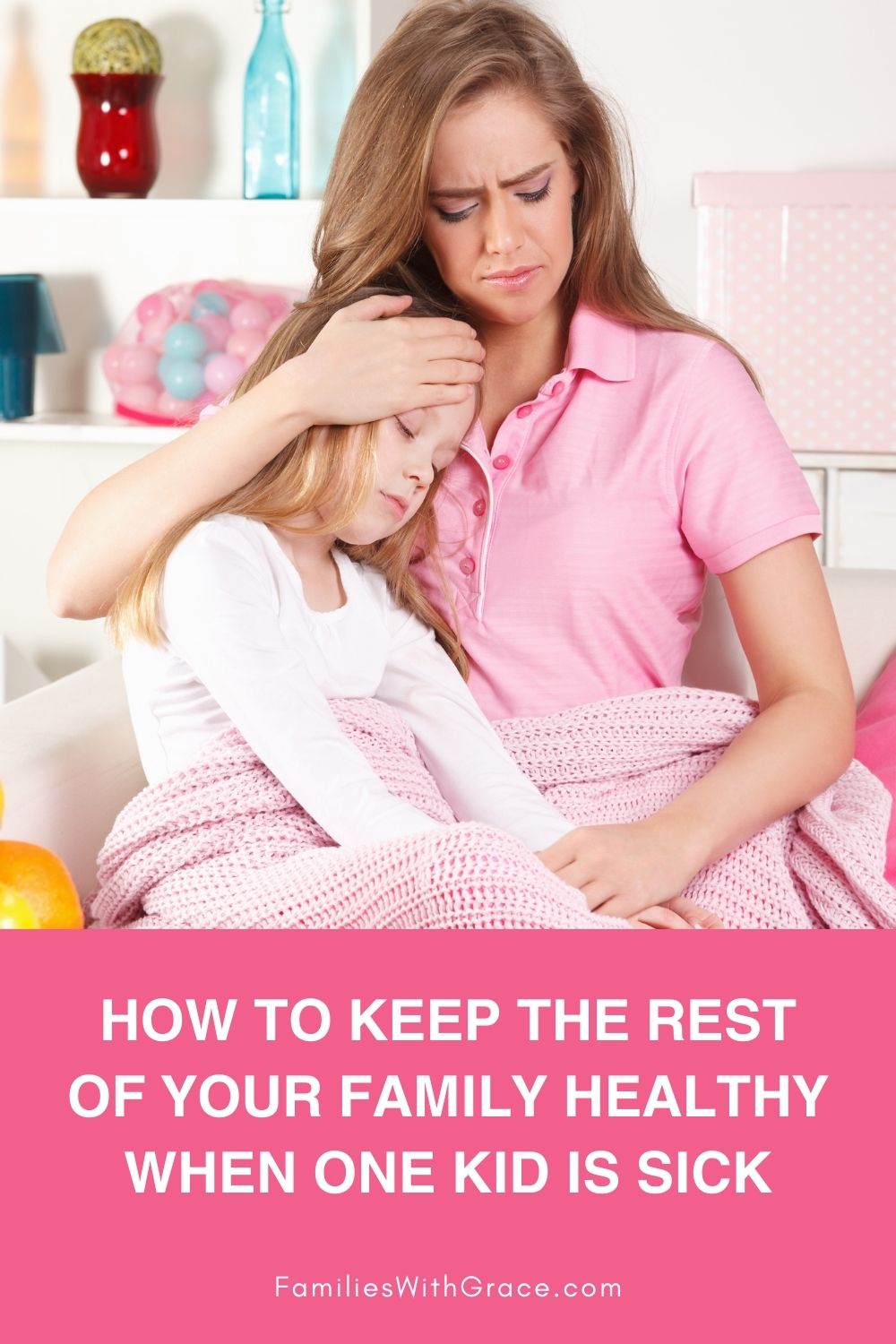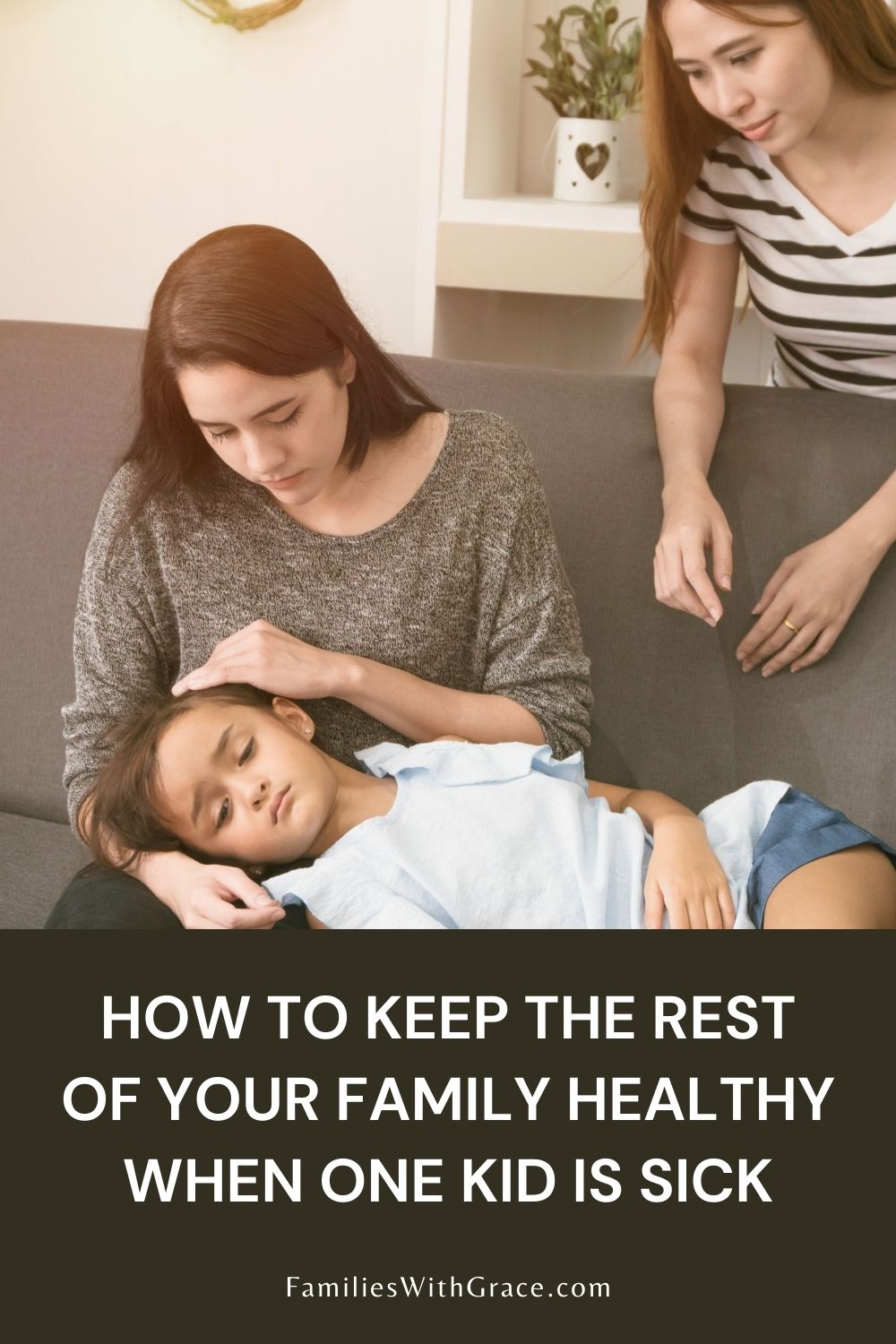How to keep sickness from going through your whole family
Last Thursday, I was in my home office working away when I got a call from the school nurse that my son was sick and needed to be picked up. I walked into her office right in time to find him throwing up in the bathroom.
So we headed straight home. I got him into PJs and settled into the living room couch with his pillow and a blanket. Our house was officially in sick kid mode.
Through the years, I’ve learned a few things about how to best prevent germs from spreading when sickness comes to our house. Whether it’s a common cold, stomach bug or strep throat (as was the case last week), a few tricks I’ve learned along the way can usually stop the spread of germs from going through our entire family.
Last spring I was the one who started off with a stomach bug, and it went through our entire family. I think it was in part since I was sick first, I wasn’t able to enact sick protocol because I was barely able to function!
Affiliate links are used in this post, if you make a qualifying purchase via my link, I receive a small percentage of the sale at no additional cost to you. It helps support my blog, so thank you for your support! Read my full disclosure here.
1. Give the sick person their own towel.
My mom is the one who did this first. I have to admit, I thought it was kind of crazy initially.
I’m talking about the towel you use in the bathroom after you wash your hands. Since it’s the towel you use AFTER you’ve washed your hands, I didn’t think it could even spread germs.
But, it seems to, especially when kids are sick. When our kids are sick, they’re washing their hands as quickly as possible because they don’t feel well.
Honestly, I’m probably not as thorough as I should be in washing my hands when I don’t feel well and just want to lie back down.
So I designate a sick person towel for hand-drying in each bathroom that person uses. I always do it in our downstairs half bath, which we all use all the time and then either the master bathroom or kids’ bathroom upstairs, depending on who is sick. I use two different colors so it’s easy to remember.
Last week, for example, my son was using a blue towel both downstairs and upstairs, which was easy for everyone to remember since blue is his favorite color.
My kids will also wipe their mouths on their hand-drying towel in the bathroom after brushing their teeth, which is also a huge way to spread germs. Giving the sick person a separate towel really does help.
2. Use plastic bags and trash cans.
Aside from just being miserable, throwing up is also a great way to share germs. Yuck! It can be hard for kids to always make it into the bathroom before throwing up.
We learned really quickly when our kids were little to have a stand-by container for throwing up that traveled with them wherever they went while they were in that stage of sickness.
We use a small trashcan from the bathroom or kids’ bedrooms. I line it with a plastic grocery bag and change it out whenever they use it. I tie it off and throw it — and the germs — away.
This also works well for colds and using lots of tissues. The trash can being near the sick person lets them throw their tissues right into the trash, and it’s easy to bag up and toss out frequently to get the germs out of the house.
And then when the person is all better, I wipe the entire thing down with bleach wipes to get rid of any residual germs.
3. Consider using baby wipes.
My youngest kiddo is 6. It’s been a few years since anyone in our house has worn diapers, but I still keep unscented baby wipes on hand.
They help for cleaning up messes when kids are sick. They can also help with wiping bottoms or with wiping mouths after someone gets sick. (Do NOT flush them!)
The best part is they can be thrown away and not have a worry of spreading germs. I have used wet washcloths in the past, but quickly learned that baby wipes can be more sanitary.
I often throw them into that plastic bag I mentioned above and toss it all out together. The more I can get germs out of our house, the better!
4. Keep your kitchen sink area clean.
The kitchen sink is one of the biggest areas affected — and overlooked — when you have a sick family member. It’s where drinks get poured out and dishes get rinsed or washed. So it’s fair to assume that germs are hanging out in the kitchen sink.
During times I have a sick person, I wipe down my sink and all around it with bleach wipes often. Any time I’m ready to wash dishes in the sink, I wipe it down first.
It takes just a few minutes and helps contain germs. (I love bleach wipes for their convenience, but you can use whatever you prefer that kills germs.)
I am also careful with my dishcloth. I have some things that need to be washed by hand that we use when the kids are sick — mostly their drink Thermoses for keeping cold water easily on hand in a container that is spill proof when closed.
I either change my dish cloth out after hand-washing items the sick person has used or use a paper towel instead of a dishcloth for washing.
5. Manage bedding to prevent germs from spreading.
When my sick family member is better and no longer contagious, I change their bedding. Depending on the sickness, I may just change their sheets (like for a common cold).
For other things, though, I also make sure to wash all their blankets as well. I wash them in hot water to get all the germs.
I also have a white blanket I use for my kids when they are sick and want a blanket in the living room. I got it for my daughter’s first twin-sized bed and we stopped using it a couple of years after.
I have since designated it the sick blanket for a couple of reasons. First, the blanket is large and keeps them covered well even as they move around on the couch.
Secondly, since the blanket is solid white, I can bleach it as well as wash it in hot water to get rid of germs.
If they are hanging out in the living room, I also let them use their bed pillow as well. Not only do they find it more comfortable, but it also keeps the germs from spreading to toss pillows they lie on.
It’s much easier to wash a pillow case than a toss pillow.
6. Minimize physical contact with other family members.
This rule applies mostly to my kids interacting with each other and sometimes with us. At bedtime, we usually have hugs and cheek kisses all around.
When someone is sick, we squash that. Of course we don’t keep our kids from snuggling into us or being with us when they are sick. But we do encourage them to avoid kissing each other and such.
7. Don’t share dishes or utensils.
This one isn’t so surprising, but not sharing cups or plates with someone who is sick is a great idea.
We are not a family who shares dishes at all. I am probably a bit of a germaphobe, but you never know when someone is on the brink of getting sick and is contagious with something without even having symptoms.
It really happens and has actually affected us in the past a couple of times when we did decide to share.
8. Clean the bathrooms.
Once the contagious stage is over, I clean the bathrooms. (Sometimes with stomach bugs, it may be necessary to clean throughout the sickness as well.)
It doesn’t have to be hard core cleaning, but wiping down the counter, sink (especially where they’ve been spitting out their toothpaste!) and toilet is a great plan. In just a couple of minutes, you can get rid of any germs hanging around.
Bleach wipes come in handy for this, too!
9. Clean other areas of the home to prevent germs from spreading.
Depending on what the sick person is using, I also clean other things in the house, too.
For example, the remote control for the television tends to get used by the sick person. So I often wipe it down with bleach wipes just like I do everything else.
I have sprayed Lysol on doorknobs and even on the couch. I figure anywhere I can think of that could have a germ is a great place to tackle, especially when dealing with a stomach bug. Those are always so contagious — and so miserable!
10. Maintain good hygiene.
Kids aren’t always great at thinking of hygiene when they’re sick and I don’t blame them! So, I usually help mine remember to at least change PJs and underwear daily.
(And I promise I’m not mean. I bring the clean PJs and undies to them wherever they are settled and even help them with changing.)
As soon as the kiddo is better, we also do a bath or shower. First of all, I know how much better I feel whenever I have a shower after being sick. But secondly, it also works to get rid of any extra germs hanging around.
11. Keep yourself clean.
I realized early on in having two kids that even if I keep them relatively separated while one of them is sick, I can carry germs between them. Keeping my hands clean is the biggest tool to help with this. (And it helps keep me well, too!)
I clean my hands after helping someone who threw up. I clean my hands after giving them medicine or after picking up their dish and putting it in the dishwasher.
Basically, after I am finished interacting with the sick family member or their belongings, I wash my hands or use hand sanitizer to get rid of germs on me.
Many times, I move a bottle of hand sanitizer to my end table when someone is actively sick and I need to clean my hands often but also be near to whoever is sick.
And just like hygiene with my kids, I often pull out comfy clothes for when they are sick because we are home and they need to snuggle and I want to be comfy. While sometimes wearing the same yoga pants a couple of days in a row is fine, I’m aware of it more when the kids are sick.
Did someone wipe their nose on me? Did I encounter other bodily fluids or germs on my clothes? I don’t mind doing some extra laundry and switching out my clothes if it helps avoid the spread of germs!
12. Keep your sick person medicated if need be.
The final tip for containing germs is keeping the sick person on their medicine schedule to take all of their medicine they’re prescribed. Not all sickness requires a prescription, but some do.
I am a HUGE fan of medicine charts. They help me remember to give medicine.
This was especially important when my son was a toddler and went through some tricky years of croup that we had to manage antibiotics, breathing treatments and steroids at different times throughout the day.
But even if it’s just an antibiotic twice a day, keeping a chart still helps me remember to give the medicine, long often they start feeling better.
I made a chart in Microsoft Excel that I update each time I need it, print out and put on my fridge. (You can download it below!) It takes one or two minutes and makes my life easier.
The medicine chart also helps my husband and me keep track if the other one has given a dose of medication so we don’t end up double-dosing. That’s not as big of an issue now that our kids are older and can tell us, but it definitely was in younger years.
Taking all medication as prescribed gets the sick person totally better and squashes a chance for a relapse and more germs!
